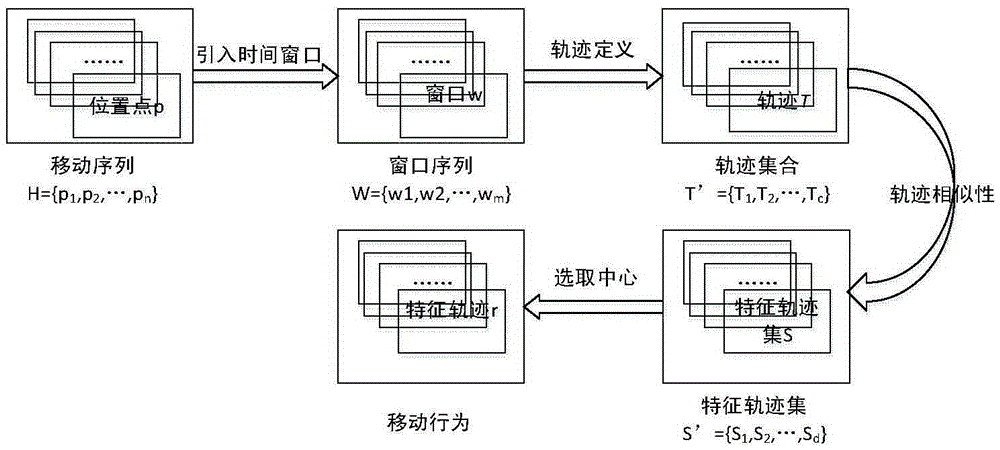Density and closeness clustering based user moving behavior determination method
A technology for user movement and determination methods, applied in special data processing applications, instruments, electrical digital data processing, etc., can solve the problems of mobile user data confusion, large amount of data, and few user representative trajectories
- Summary
- Abstract
- Description
- Claims
- Application Information
AI Technical Summary
Problems solved by technology
Method used
Image
Examples
Embodiment Construction
[0058] An embodiment of the present invention will be described in detail below in conjunction with the accompanying drawings.
[0059] Although the mobile user's location movement is random, considering a period of time, the mobile user's mobile behavior shows regularity and follows a simple and repetitive pattern. The present invention mainly starts from the mobile user's mobile behavior, and proposes a method for determining the user's mobile behavior based on density and closeness: firstly, track mining is performed based on time; The data is clustered and analyzed to construct user mobile behavior. The method for determining user mobile behavior based on density and closeness clustering in this embodiment, such as figure 1 shown, including the following steps:
[0060] Step 1: Obtain the user base station sequence composed of all the base stations passed by the user within a certain period of time, that is, the user position transformation sequence;
[0061] Step 2: Ba...
PUM
 Login to View More
Login to View More Abstract
Description
Claims
Application Information
 Login to View More
Login to View More - R&D
- Intellectual Property
- Life Sciences
- Materials
- Tech Scout
- Unparalleled Data Quality
- Higher Quality Content
- 60% Fewer Hallucinations
Browse by: Latest US Patents, China's latest patents, Technical Efficacy Thesaurus, Application Domain, Technology Topic, Popular Technical Reports.
© 2025 PatSnap. All rights reserved.Legal|Privacy policy|Modern Slavery Act Transparency Statement|Sitemap|About US| Contact US: help@patsnap.com



